Right now someone is working on a skate video and chances are you won’t care about it–that’s just the truth. It’s not that these self produced web clips aren’t good and made by passionate people, it’s just that there are so many of them, it’s easy for even the best ones to get overlooked. You could say the same about underground zines in the ‘80s, now instead of using a copy machine and a glue stick to communicate–it’s all about the directness of video.
There will always be a few videos and clips a year that make an impact and that people will actually purchase, but there’s also hundreds that come and go. No matter what happens or how the landscape changes, there’s always going to be people who show you a different side and personality in skateboarding. Josh Stewart has a knack for capturing skateboarding in a way that’s simultaneously raw, artistic, and highly skilled. His Static series–now entering its fourth installment–has become cult-like in its following. It defines the true spirit of skateboarding.
We spoke with Stewart about the challenges of creating a video in this day and age, and what we can expect from Static IV.
Can you give us the details and history behind the highly anticipated upcoming Static IV video?
Well, if someone’s not familiar, Static was a video series started around 1999 when I lived in Tampa, Florida. It was an attempt to present skaters up and down the East Coast that were using the actual streets when street skating had gotten pretty heavily focused on single tricks, big drops, handrails, and fast editing. Static attempted to challenge that and bring back the spirit of street skating that had inspired a lot of us years back. And it attempted to unify the east coast scene a little more, present it altogether, from Boston down to Miami.
Now, almost 15 years later we’re only on the 4th installment.. ha ha. Actually, Static III was meant to be the final piece in the series, but several skaters that I intended to be in it had to be pushed out so that the video was of a manageable length. Sadly, it’s taken me five years to get even close to finishing this newest installment.
You once put a lengthy entry on your site about the state of web edits and how they can be really poorly done. Do you feel a responsibility to the medium of skate videos and the art of them?
I should’ve been more careful with my wording in that article. It wasn’t written clearly and could be easily misconstrued. I actually have found that some of the lower-quality pieces I’ve seen online are some of the most enjoyable and by that I mean the quality of the actual filming or even the level of skating. To call skate videos an “art form” and then criticize the quality of the work is a bit of a contradiction, because art can’t really be judged like that. What I was talking about was more the motivations behind the online edits we are subjected to constantly these days and the care with which they’re produced and released.
People are so anxious to promote their brands or to make a name for themselves, that they’re rushing and just barfing out anything they can without holding the higher standard that people tend to subject their work to when they’re releasing it in hard-copy format. Does that makes sense?
”People are so anxious to promote their brands or to make a name for themselves, that they’re rushing and just barfing out anything”
Basically, the recipe used to be that you would work for a long time on a project and put your all into it, because you ended up with this solid, tangible item for which you could take pride in. It represented the ideas, hard work, and commitment you had made to create it. The new model is to simply produce as much content as possible. Because the more people saw your brand’s logo or your name on the screen, the more publicity you’re getting and the more capital (either financial or popularity) you will earn. It’s twisted.
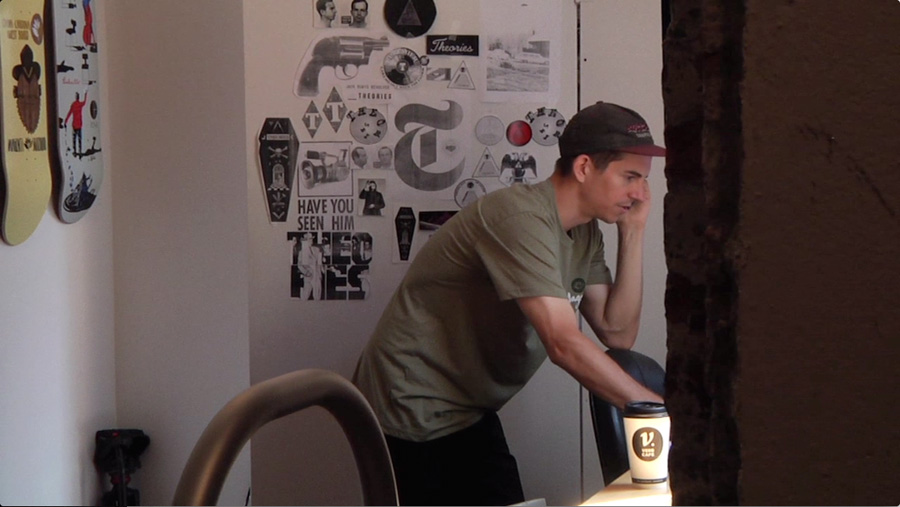
I heard Peter Hook from Joy Division talk about how hard it is for musicians to actually sell their music to fans, specifically to young people who grew up downloading. There’s an obvious parallel with skate videos. Is the way to get people to buy videos to continue to make high quality work like you’re doing, or is there another model you see working?
First off, markets and successful models change with time, so, you could sit around and whine and bitch (as I’ve done plenty of) while staying stuck in the old model and time will just pass you by. As bad as things have gotten for the music industry they’ve gotten just as bad for the video market. If you don’t evolve along with the industry in which you survive, then you’re going to get left in the dust. Not that I ever survived off of making indie skate videos, but if that’s all I relied on to pay my bills I’d be homeless.
One of the rad things about the skate video as an art form is that most of the people doing good work in the indie video scene aren’t motivated by financial gain. And it makes it more pure as an art form when it has to be done on the side of making a living. I’ve been saying it for the past few years that there is a growing scene of skaters who want to support underground stuff that they believe in. I have seen a huge increase in the amount of customers buying hard copies of DVDs on my website. Even of videos that are free to watch online.
”I think indie skate videos are one of the most meaningful things in skateboarding.”
I think there’s a natural reaction to being bombarded with cheap, meaningless online edits every day… you become more selective, develop a more critical taste and you want to support the things you see as being meaningful. And I think indie skate videos are one of the most meaningful things in skateboarding.
Big videos like Pretty Sweet and Parental Advisory, took unique and separate approaches to marketing: DGK went with a very product based, edgy package that appeared aimed at a younger demo and Pretty Sweet went with a really clean deluxe edition and dedicated web store. Did you see either as a success and would you explore doing something like this with your work?
Well, I agree that the skate video is definitely not a commodity to survive off of. If your goal is to recoup expenses and maybe turn a profit, you’re better off using the skate video as a way to bring attention to other items that are for sale. Brands use skate videos as promotional tools to boost sales of boards, clothing, etc. So I think indie video makers would be wise to follow suit.
Innovative video makers not only create entertaining video projects, but like in the case of Peter Sidausklas of Bronze and Caviar, you see that he’s created an original feeling–an aura and experience that transcends the constraints of the video you watched online. You still feel it after turning off your computer or TV. So there are those rare videographers who give us a unique experience and there are tons of people, including myself, who would be down to support some of these guys’ talents by buying a shirt, hoodie, hat, or something else that continues that experience.
Sounds like some douchey corporate boardroom talk right there, but it’s just the reality of things. A lot of these dudes are contributing SO heavily to our culture and giving us something exciting to experience, so it would be awesome if they found ways to support their ability to continue producing stuff we can enjoy.
”I DO think that people filming with dollies, 15 pound cameras, steadicams, and high-speed cameras pushes skating into a realm that I personally think disconnects it from its roots”
Do you think that the emphasis on high production video takes away from the skateboarding or enhances it?
Hmmm… it always depends on the application. Like, if Pretty Sweet had come out as the next video after Mouse I think it would’ve been totally wrong for the branding at the time to have such high production value. But now Girl/Chocolate have slowly transitioned into a more pop brand and Ty, Federico, and Spike have taken it into that realm where you come to expect crazy high production.
I think in that context it was befitting of the brand and the skaters, and I thought it looked incredible, especially when it fit the skaters personality or style. But then I think it didn’t really match the street style of Vincent Alvarez. So, I think it would’ve been rad if Vincent’s part was more basic, less over-the-top editing and camera angles so that it matched his style of skating, but I DO think that people filming with dollies, 15 pound cameras, steadicams, and high-speed cameras pushes skating into a realm that I personally think disconnects it from its roots and the reasons why it has attracted so many of us since we were kids. I just don’t think that art is created under such planned, organized and choreographed environments. That’s how sports happen. I think we need to be careful and mind the difference.
How would you describe your approach to filming skateboarding and creating videos and what else would you like to document or do with your work?
Oof… these questions. Got any softballs in your bag of tricks over there? Ok, so… I don’t think I’m special or interesting but the problem is I overthink everything. Not in a good way, it’s like a disability or something. So as uncomplicated as talking about skate videos should be, I will easily over-complicate it for you.
Well… I think that I try to look at the subject matter and analyze how that subject makes me feel. So, like if it’s for a brand or, say, like for the project I did for MIA skate shop, I try to determine what feeling I get from the idea of that brand. I want to tap into whatever emotion that idea pulls out of me. And then I try to run with that and build an art direction or a visual aesthetic that somehow convey that to the viewer. With something like a Static video, that’s a bit different, because you’re picking skaters to work with based on the aesthetic or feeling you’ve already pre-determined you want to convert with that project.
It’s a very different approach and often you’ll find yourself nearing the end of a video and a couple of the skaters you had originally started working with no longer fit the aesthetic you ended up with. Then you’re stuck deciding how to handle that. Be a nice guy and sacrifice your aesthetic or put your project first and have to be the bad guy. Never a fun situation.
Skateboarding grew out of a very DIY culture, there have always been poorly edited video, fanzines with spelling errors and blurry photos, etc., but some of those people went on to create great work. What would you say to a young enthusiastic kid who is constantly filming, learning on the go, and putting clips out there?
Dude, it’s more often those blurry photos, technically deficient videos or whatever that I like the MOST. Technical ability is of little importance as long as you’re able to tell a good story. If you’re able to pull emotion out of your medium or create an original aesthetic it doesn’t matter how crude your means are.
To a young kid who is trying his best to get out there and get recognized I would say to use other videos for inspiration if you want, but not to think that there is such a thing as a “right” way to go about it. Nothing is more refreshing than seeing a new approach or new twist to the dead, beaten horse of the typical skate video format.
If I was giving advice I would say to just be yourself and determine what it is that makes your scene or the way you see skateboarding unique from the rest of the world and run with that. Take Dan Magee’s videos for Blueprint Skateboards. Instead of making videos that fit the American aesthetic he played up the British culture very heavily in his videos. And as a result it pulled you into another world. His videos gave you a fully unique experience. Which is a very rare occurrence these days in the skate video world.
What videos made the biggest impact on you and why?
I think that it’s only natural that the videos we see when we’re young leave the strongest impression on us, but I think that our generation was especially lucky because only a few videos came out each year and it gave us a chance to really appreciate them and study the shit out of them. For me the early H-Street videos were my favorites, and I dug Lance Mountain in early Powell videos as well, but the one of the first videos to really capture my imagination was the first Alien Workshop video Memory Screen. I still think it’s the most brilliant video ever done in skateboarding. Then the next hugely impactful video was Stereo’s A Visual Sound. What a masterpiece. Still a source of inspiration for me from time to time, and finally, and most obviously, Eastern Exposure 3.
I’d say that EE3 is the best street skating video ever. It not only captured street skating in the rawest and most simple way, but it also captured a very important moment in time. When the East Coast took over skateboarding for a brief moment. Ricky Oyola, EE3. That part crushes everything.
Anything you want to add, or things coming up to mention?
Man, there are so many things coming up it’s almost too much to mention. I have a distribution company and a website where I import and sell brands like Polar, Magenta, Palace, Traffic, and Hopps, so we’re always working on something new for one of the brands if not several at a time. It’s exciting because it guarantees that I’m always getting to work with rad skaters and with people/brands that are doing different and unique things. There are some other possible video offerings on the table as well and I’ll also be putting more energy into my my brand “Theories” once Static IV is wrapped up. Not making any promises on WHEN that will actually be, but I’d say that five years is probably the longest I should ever work on a video. So hopefully I’ll be seeing you at the premiere fairly soon.
Related Posts
Comments
Popular
-
 RECONTEXTUALIZING ZAK ANDERS, ONE OF TODAY’S MOST MYSTIFYING SKATERS
RECONTEXTUALIZING ZAK ANDERS, ONE OF TODAY’S MOST MYSTIFYING SKATERS
"I don’t want to be this brutal punk that hates everything that people like, and I’m trying really hard to undo that."
-
 RARELY SEEN PHOTOS FROM READ AND DESTROY, THE BELOVED BRITISH SKATE MAG
RARELY SEEN PHOTOS FROM READ AND DESTROY, THE BELOVED BRITISH SKATE MAG
Check out early documentation of London's Southbank, vert ramps tucked into Lord of the Rings-level forests, and everything in between.
-
 NAVIGATING SKATING’S HIGHS AND LOWS WITH MATT MILITANO
NAVIGATING SKATING’S HIGHS AND LOWS WITH MATT MILITANO
Over coffee and cigarettes Matt talks prank shows, ABDs and his love for the VX.
-
 A CHAT WITH LUDVIG HAKANSSON, THE OLDEST SOUL IN SKATEBOARDING
A CHAT WITH LUDVIG HAKANSSON, THE OLDEST SOUL IN SKATEBOARDING
The man loves to read Nietzche, skates in some expensive vintage gear, and paints in his own neoclassical-meets-abstract-expressionist style.
-
 MEET THE SEATTLE ARTIST WHO DESIGNED A BACON ’N EGGS INSPIRED SKATEPARK
MEET THE SEATTLE ARTIST WHO DESIGNED A BACON ’N EGGS INSPIRED SKATEPARK
Breakfast-obsessed skaters rejoice!

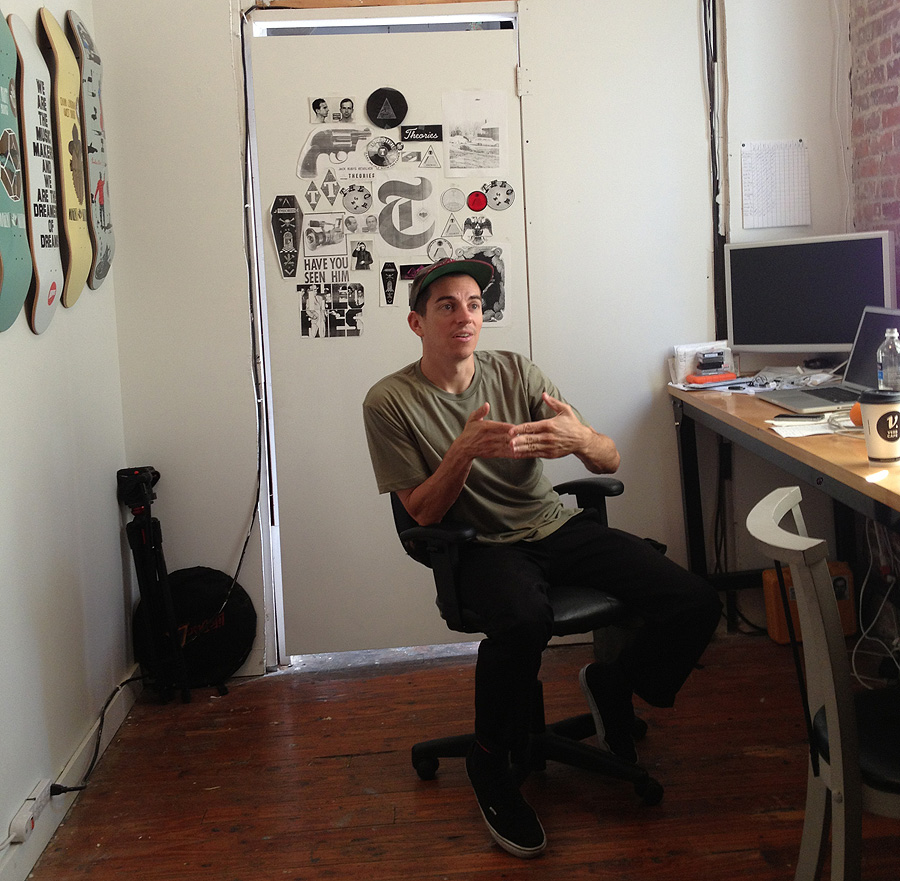
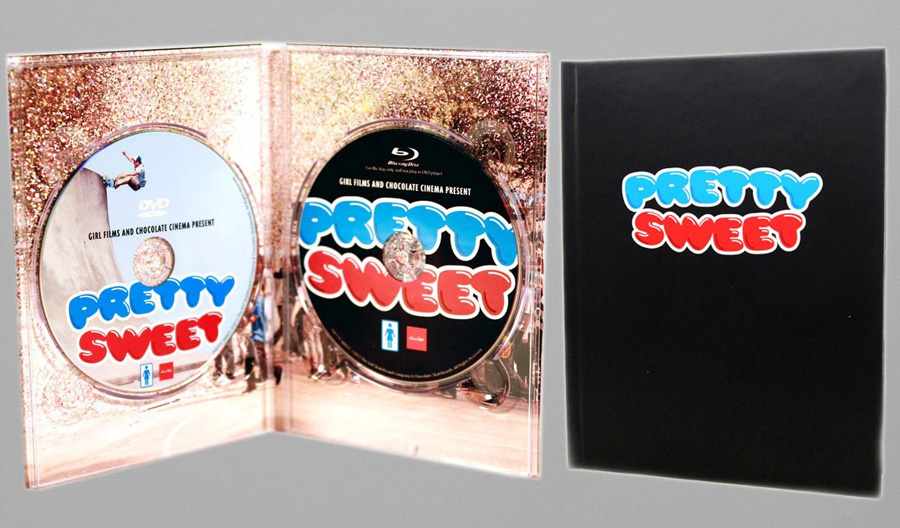
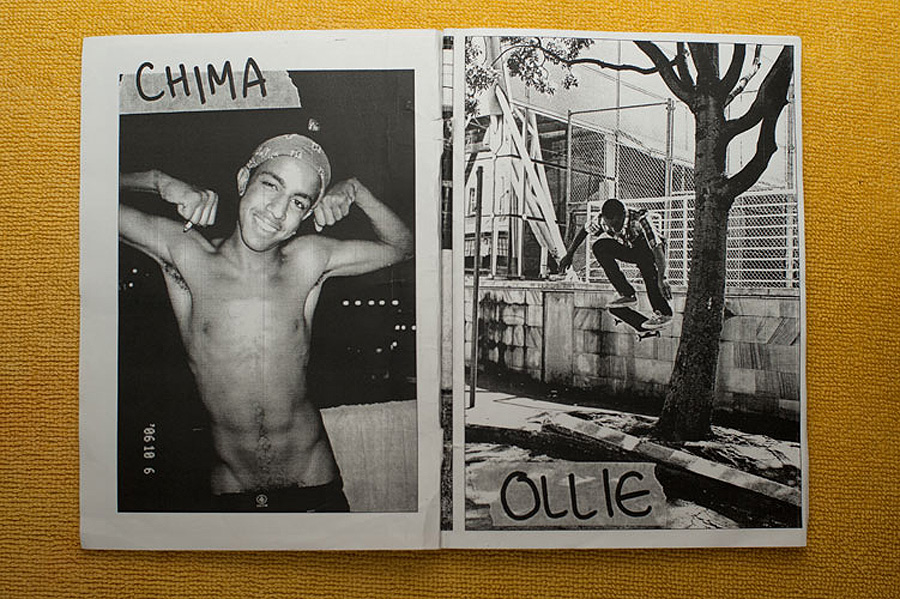
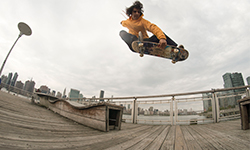
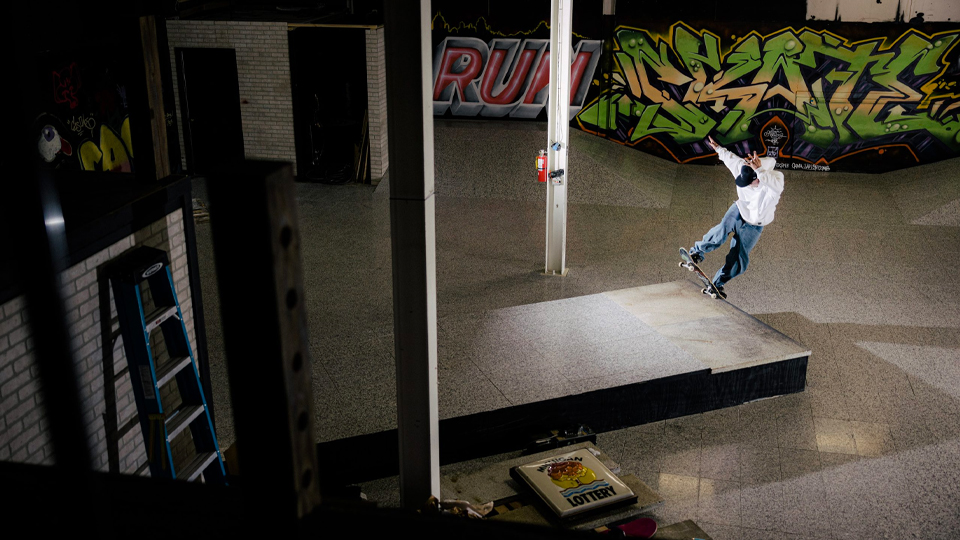


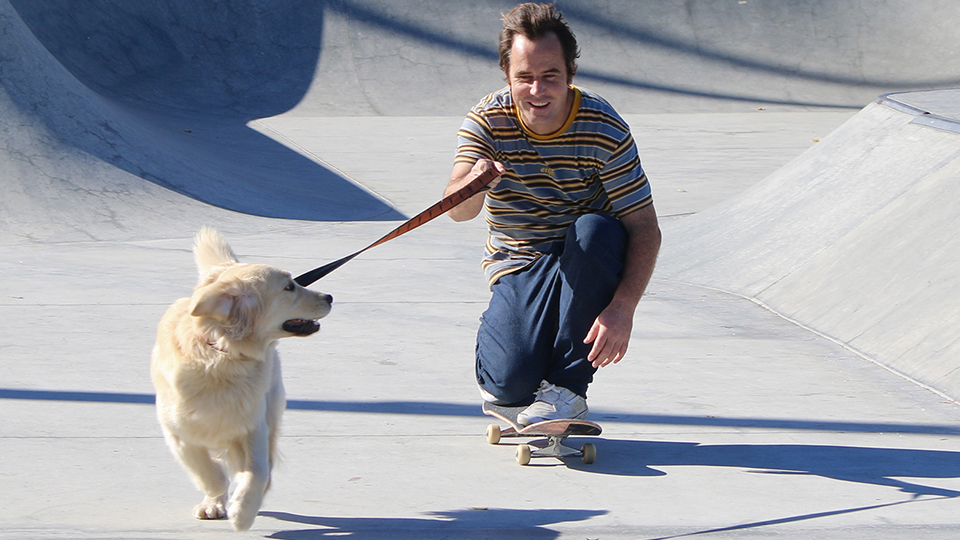
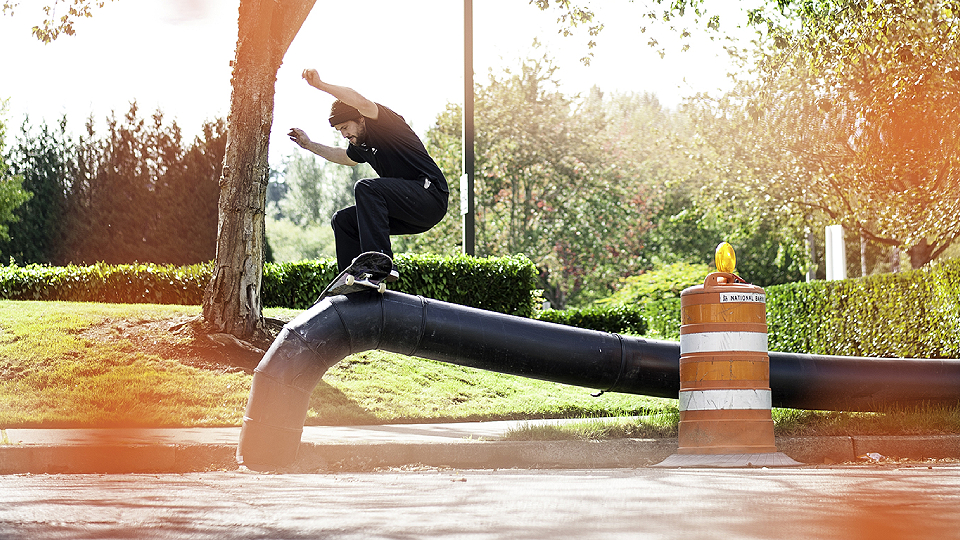

January 21, 2014 6:29 pm
“I heard Peter Hook from Joy Division talk about how hard it is for musicians to actually sell their music to fans, specifically to young people who grew up downloading. There’s an obvious parallel with skate videos.”
And that’s why Peter Hook don’t sell any music to his fans. Because Peter Hook is stuck in an era where selling music to your fans means selling physical media to your fans. If Peter Hook just dug a little bit deeper and actually tried to look up how the music industry is developing right now (the industry wich he is actually working in), he would realize that if he promote’s streaming applications like Spotify, Beat, or Deezer, towards his fans, and not be stuck in “the good ol’ days”, he would actually in a long term, earn more (or at least the same) amount of money in, say, 5-10 years from now, that he did when physical formats were at their top in 2000-2001. Because we can’t forget what selling music to his fans means right? Earning more money. And i think that’s the same problem skateboarding has nowdays. A lot of the big brands on the market doesn’t want to earn money, they want to earn A LOT of money. Back in the days there were a couple of brands that did ok, just ok, and on the teams they had skaters that MAYBE earned money on what they were doing. The skaters and the brands were in the industry because they loved skateboarding, not because of the money. I’m not saying that it was better then or now. Things evolve, they can’t always be what they were, and that’s the same for both the musicindustry and the skateboardindustry. There will always be ups and downs in the conjucture and the cash flow, but if you always remember why you did, and doing, whatever you’re doing it will at least be Fun!
January 21, 2014 7:48 pm
Josh Stewart speaks truth. Thanks, Jenkem. Well done.
January 22, 2014 2:38 am
Gotta love Mofo chiming in! Excellent interview; Josh values quality, which is refreshing.